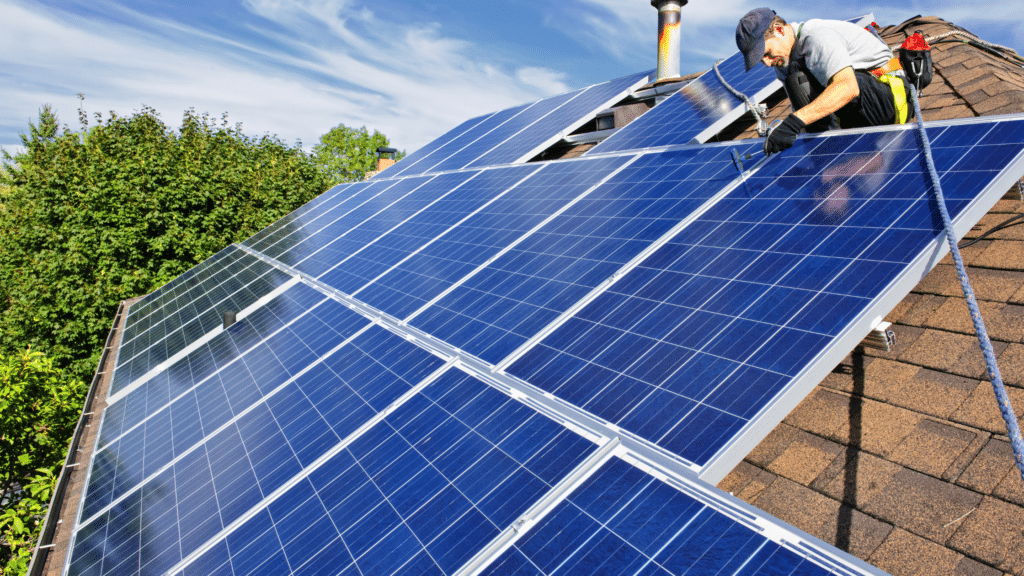Are Solar Panels Worth It in 2024? – MarketWatch
Several factors can play a role in whether or not solar panels are worth it for you, including:
- The weather and climate where you live
- Your roof’s steepness, shading and size
- Solar incentives available in your area
- The amount of energy your household consumes
For instance, if you live in a state that receives a lot of sunlight and has ample solar incentives, in addition to having a large, south-facing roof, you will see high solar energy savings. On the other hand, if you live somewhere with less sunlight, fewer solar incentives and a steep roof, solar may still be worth it but you will likely see lower energy savings.
Location
The location of your home plays a vital role in the value of a solar power system. If you live in a part of the country with lots of sunlight exposure throughout the year, you will get more out of using solar panels than in cloudier locations.
The data analysis site Stacker determined the following 10 states receive the most exposure to sunlight in the U.S.:
Though sunny states like Florida, Texas, California and Arizona are ideal regions to install a solar system, your panels may not generate enough energy to offset the upfront installation cost if your roof is shaded by trees or buildings. But if your roof is unshaded or faces south, southwest or west, your panels will receive more direct radiation from the sun and generate more solar energy.
Locations that see more extreme weather events and power outages are also better suited for solar systems with battery storage. You can use a solar battery to store excess energy during the day to use during blackouts, at night or on cloudy days.
It is important to note that it is not just sunshine that varies with location. A state’s energy prices can also factor into whether solar is worth it for you. High power costs can help you achieve a faster system payback, while lower power costs mean lower solar energy savings. A user on the Bogleheads public forum puts it this way: “Solar investment on the grid in California with its high rates can be worth it. In Texas, solar payback is way too long.”
Your Home’s Roof
The size, shape and slope of your roof are also important factors to consider. According to Garrett Nilsen, the deputy director of the U.S. Department of Energy’s Solar Energy Technologies Office, roof structures can be one of the biggest roadblocks to going solar.
“If there are trees near your home that create excessive shade on your roof, rooftop panels may not be the most ideal option,” he said. “Solar panels perform best on south-facing roofs with a slope between 15 and 40 degrees, though other roofs can be suitable, too. Installers can model roofs to determine if the orientation and slope are suitable for energy generation.”
Steep roofs make installation challenging and can increase labor costs or require additional mounting equipment. Roofs with plenty of surface area and few obstructions — such as skylights and chimneys — are ideal. You can still add solar panels to smaller roofs but would benefit from installing efficient panels, such as monocrystalline panels, that generate more power using less space.
Local and Federal Tax Incentives
Solar tax incentives and rebates are available at the federal and state levels. The federal solar tax credit, formally called the Investment Tax Credit (ITC), allows you to claim 30% of your total system cost as a credit to reduce your federal tax burden.
If you don’t owe thousands of dollars in taxes each year, you can roll over the remaining credit amount for up to five years. We suggest consulting a tax adviser to determine how to best capitalize on the credit.
Other solar incentives vary from state to state. Many state governments and local utility companies offer solar rebates, credits, and sales and property tax breaks to make solar more affordable. Many states also offer net metering programs to help lower your power bills even more. We encourage you to use the Database of State Incentives for Renewables & Efficiency (DSIRE) to learn what rebates and solar tax credits are available in your state.
Energy Consumption
Before installing solar, it is worth taking stock of your monthly energy consumption. According to the U.S. Energy Information Administration, the average household uses around 893 kilowatt-hours (kWh) of electricity per month. On average, a residential solar setup can produce between 350 kwh to 850 kWh per month. Therefore, going solar can help you save as much as 95% off your utility bill. As a Reddit user shared, “Our last bill before getting solar was just under $800. Our next bill was $180.”
If you live in a state with high electricity rates, switching to solar will likely be a good investment. However, if your household does not require a high energy consumption to operate day-to-day, you may not save enough to offset the installation system cost. Residential solar systems can cost anywhere from $15,000 to $25,000 or more.


